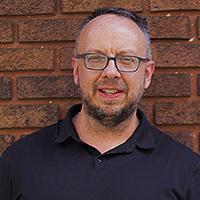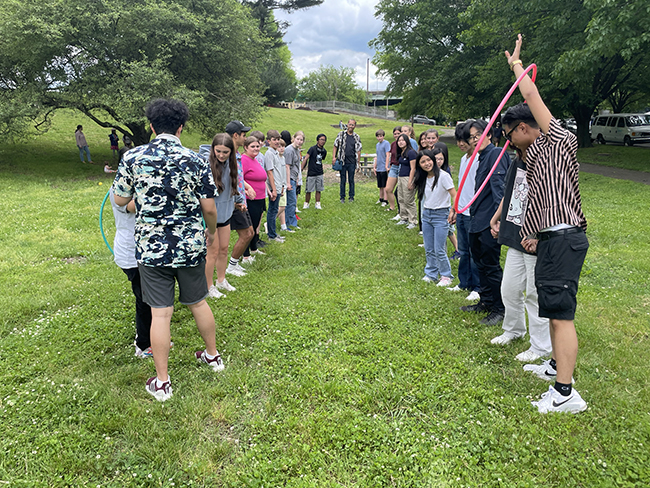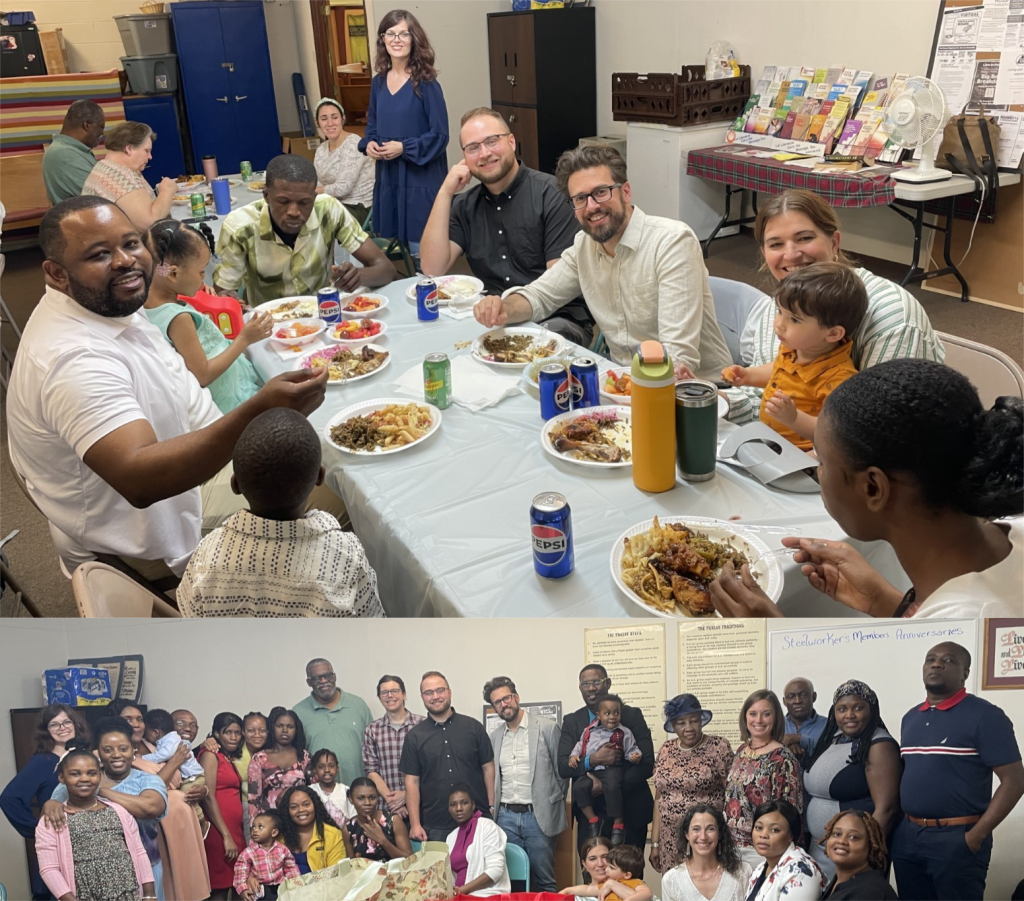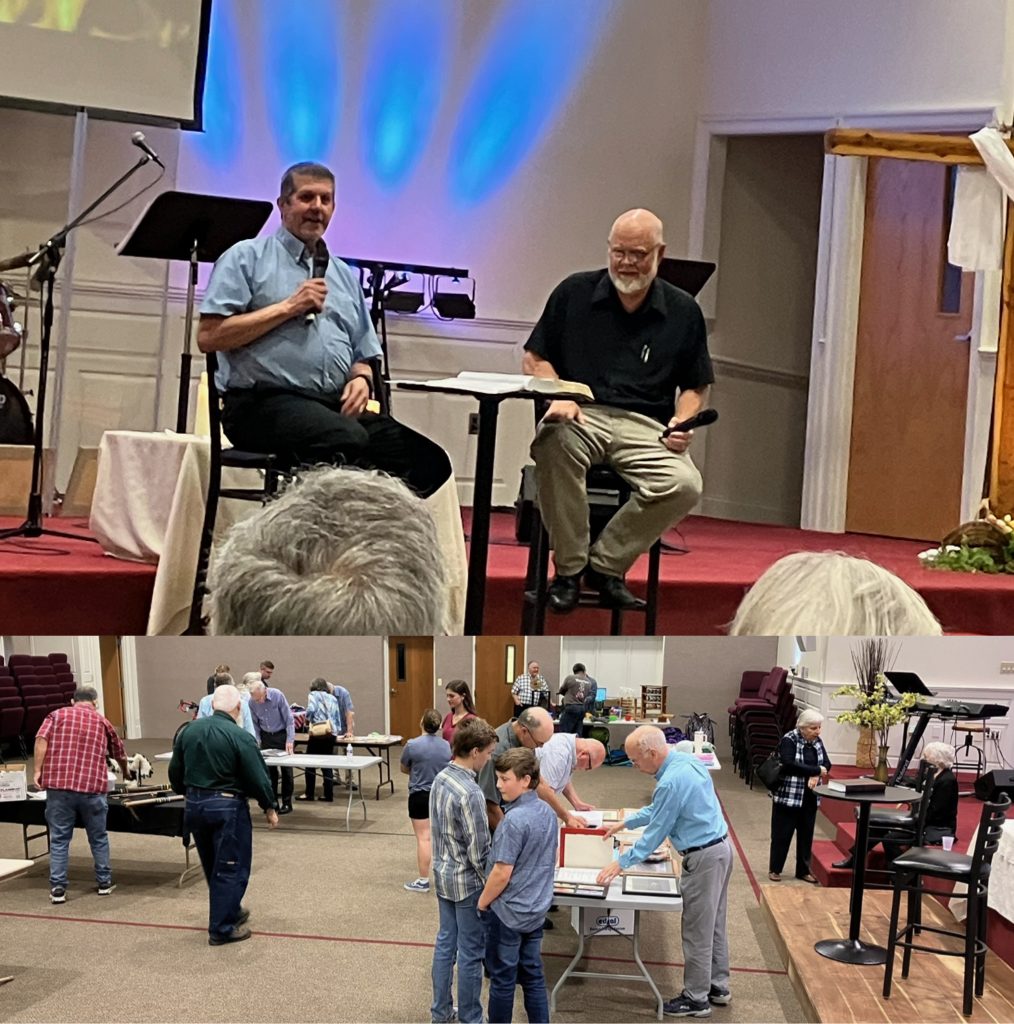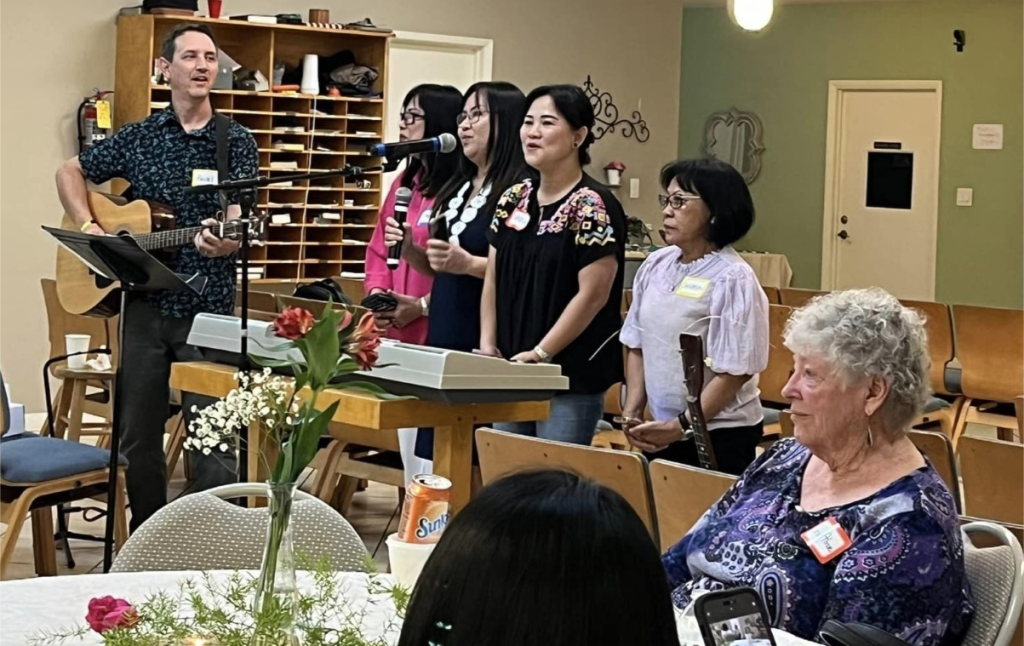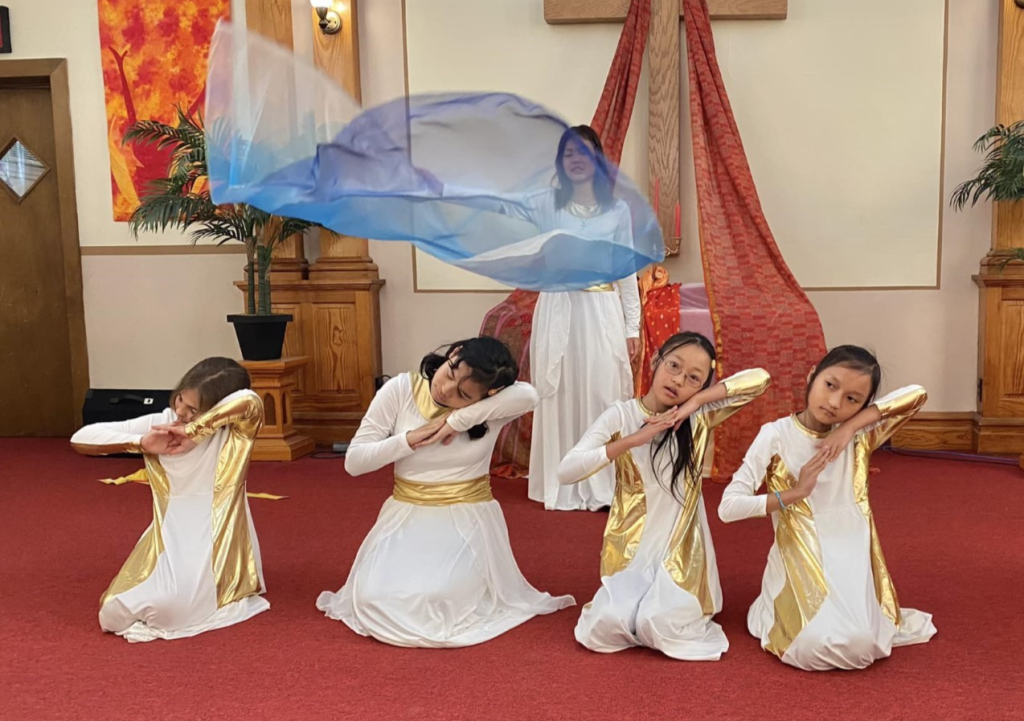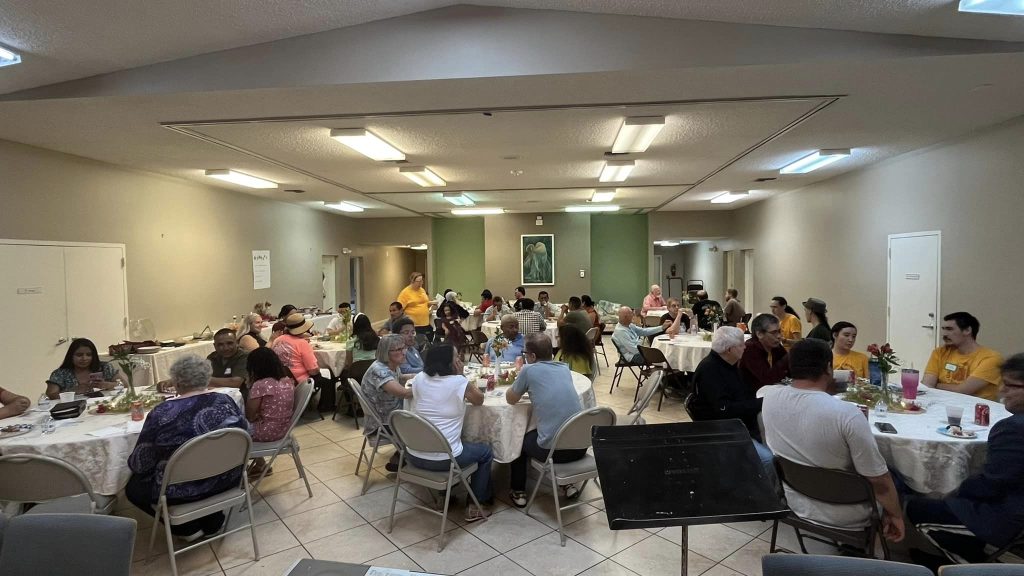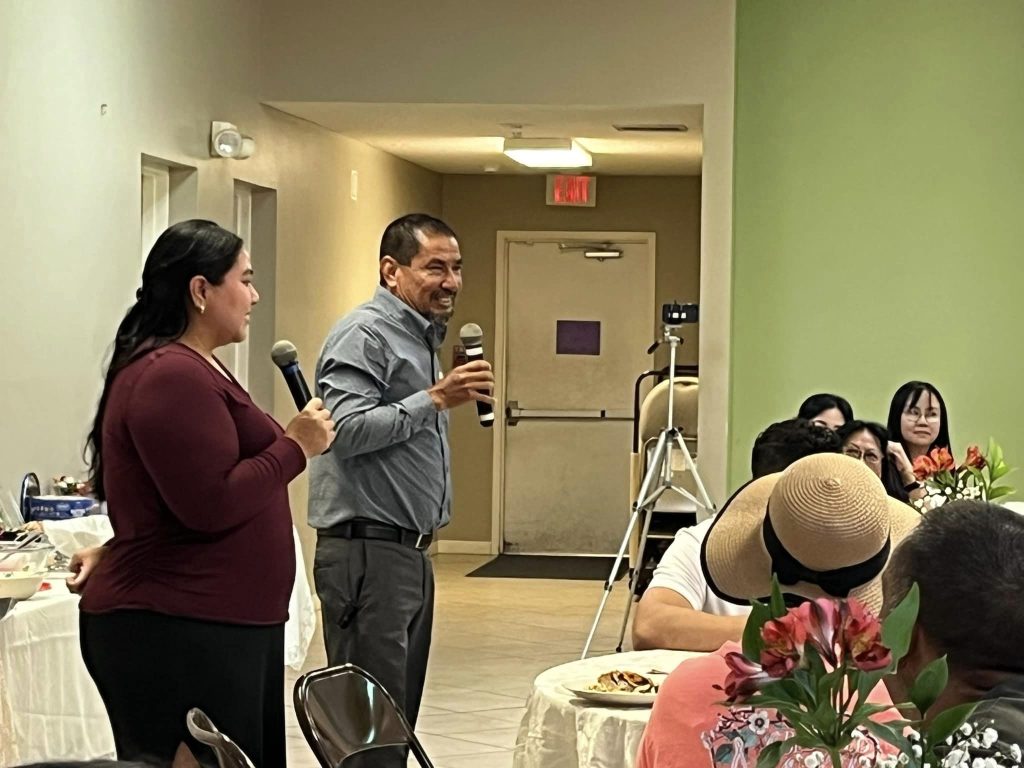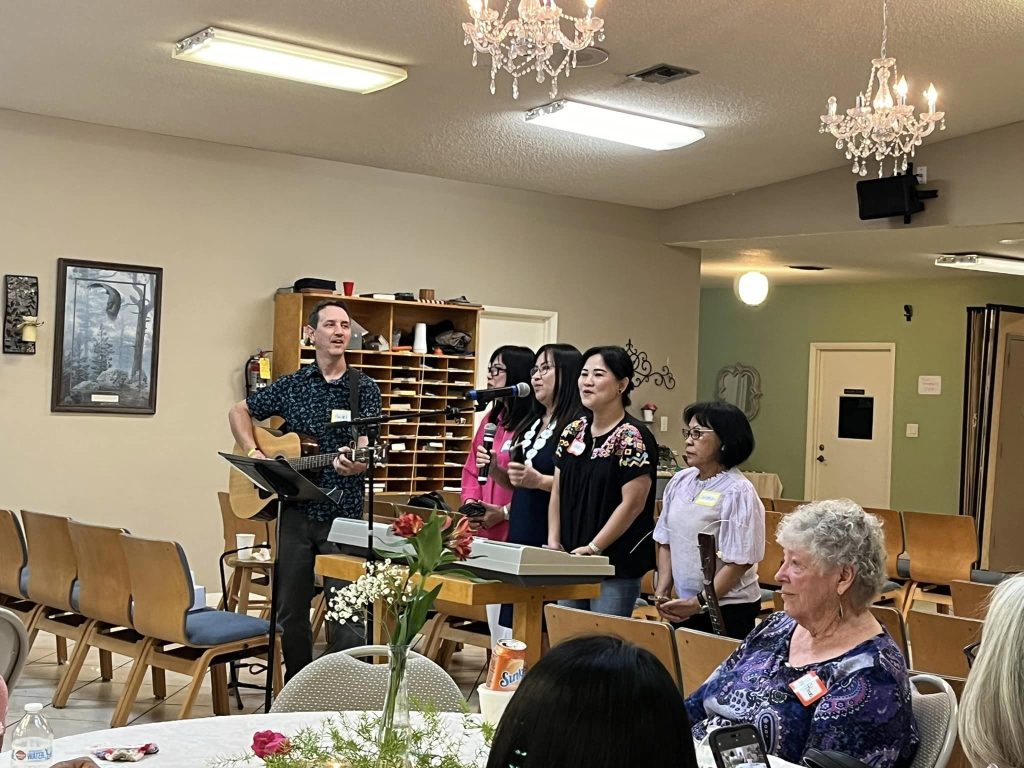by Joe Landis
Approximately a month after Russia invaded Ukraine in February 2022, Anabaptist World published a story of how MCC had to leave the region and the building that MCC had used was now used for military purposes. The article had one sentence about a special needs school in Zaporizhzhia, which caught my attention.
On the cover of that March 4, 2022 issue was a picture of Dasha Bardus, an 11-year-old girl using arm crutches to walk. After some phone calls I learned the school had 167 students and was started 17 years ago by parents. Many students with special needs cannot attend public school in Ukraine although the government provides the school building and some teachers.
To me, this was a flashback to how Mosaic Conference, (then Franconia Mennonite Conference) got involved in providing services to individuals with special needs.
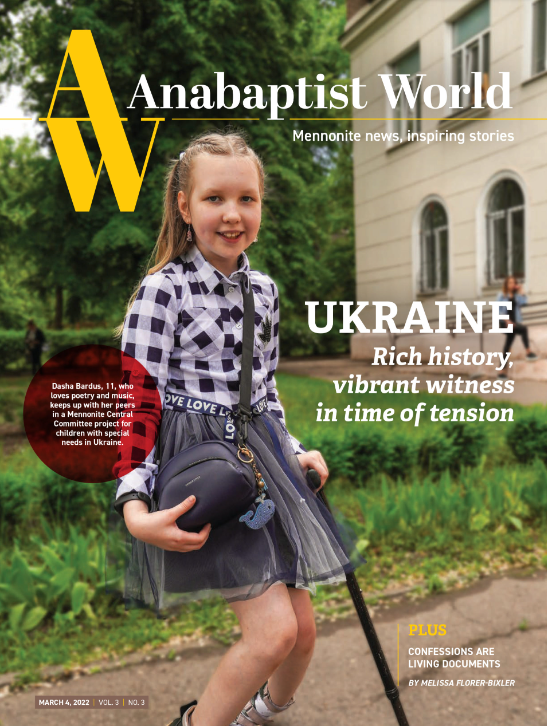
Because there was very little in the way of services for these children, it was mothers who stepped up and decided to do something. In the early 1960s, local parents, with Anna Gehman as chair, started the Wrens Nursery School in Lansdale, PA. In 1965, Gehman organized Hilltop Sunday school class at Salford Mennonite (Harleysville, PA) for 22 children with special needs, gathered from families in Lower Salford Township, allowing the parents to attend church since their children with special needs were not welcome there.
Gehman also organized a day program and convinced Franconia Conference to start and fund a sheltered workshop for people with disabilities to do light industrial work, which ran from 1968 until 1983, when it was absorbed by the Conference-Related Ministry Indian Creek Foundation (Souderton, PA). All these services laid the groundwork for Indian Creek Foundation to emerge in 1975.
Remembering the strenuous effort it takes to begin and maintain these programs in peacetime, I was struck by the fact that people in Zaporizhia are continuing to operate the Prometheus school in wartime, even as the Russian front is only 20 miles away. They hear bombs and artillery fire every night. I decided there must be some way we can offer support to these parents and their children: spiritually, morally, and hopefully financially.

On Sunday, February 2, 2024, after seeing the artwork created for Transfiguration Sunday by Salford’s Hilltop Sunday school class (the continuation of the class that started in 1965), I envisioned that this artwork could help build a relationship with fellow Anabaptists in Ukraine. I shared the idea with Salford’s Accessibility Ministry Team and Justice and Peace Team, and they both supported the concept.
As a result, we created greeting cards and posters with prints of the Hilltop Class’s artwork to sell and raise funds for the Prometheus School. This week after selling 880 greeting cards, nine posters and including donations, we mailed a check to Prometheus for $1,000.
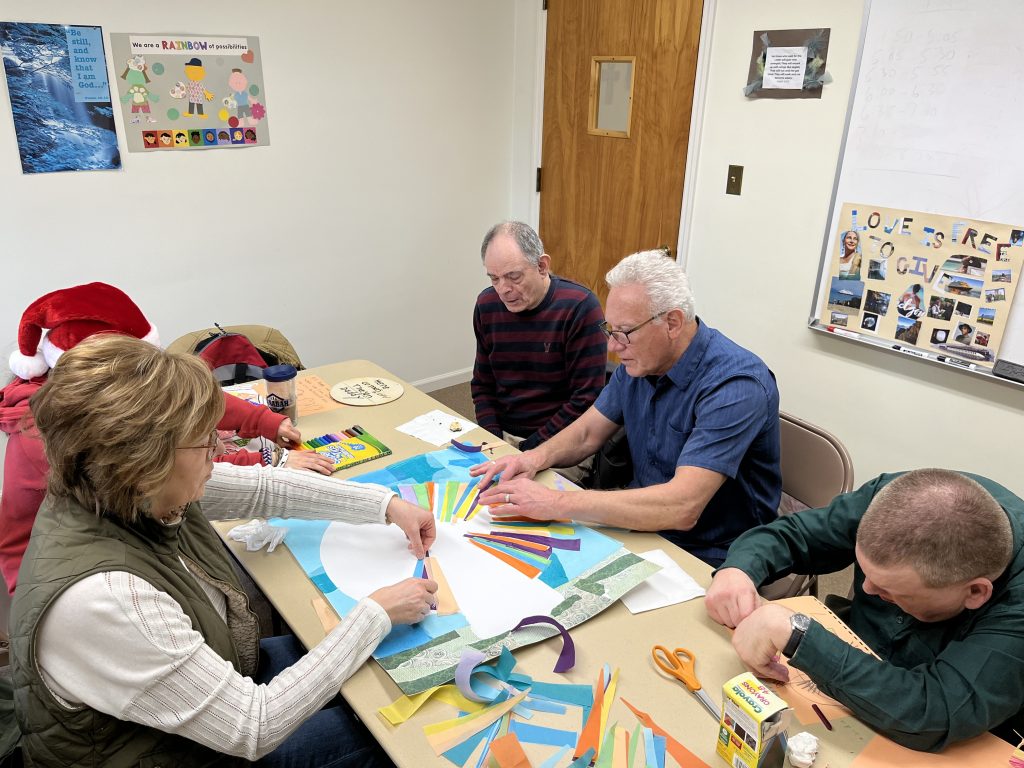
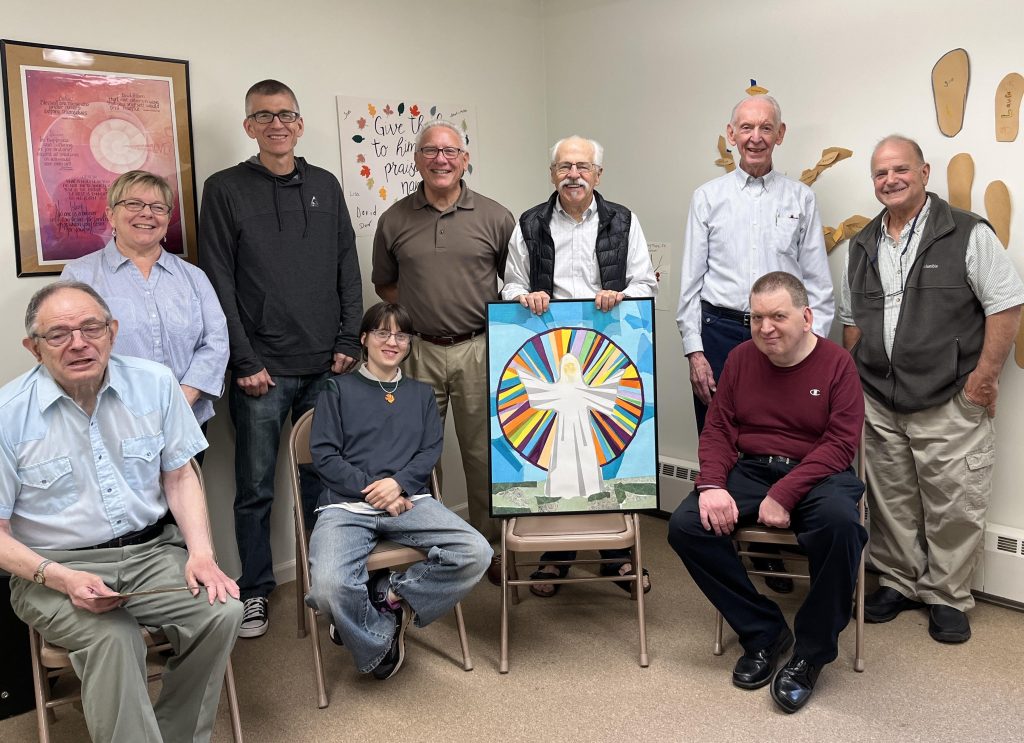
“Being part of Hilltop Class means being accepted as you are, heard when you share, singing when you are off tune, and finding beauty in creativity,” shares Lisa Yoder, who led the creation of the art piece the Hilltop Class created. “The image is a mixed media collage created to depict Jesus’ appearance to the disciples before his resurrection. The artwork reminds me of how I find Christ in each member of Hilltop. My hope is the children of Prometheus will evoke the transfiguration of Christ through our support.”
The children participating in Salford’s summer peace camp also learned about the Prometheus School and sent video greetings and songs to the children in Ukraine.

“Being involved in the Hilltop class for nearly three decades, I was very moved to learn about the Prometheus school in Ukraine,” shares Janet Bartholomew, a leader of the Hilltop Class. “As our hearts ached for the Ukrainians when the war broke out, I remember several Sundays that the Hilltop class added our prayers for the people there. From a small class in Pennsylvania to another group with special needs and their caring parents, it really felt like the hand of God was directing each step!”
We invite other Mosaic Conference congregations to join this effort of relationship building with the parents and children with special needs in Ukraine, by selling greeting cards and posters. At least one other congregation in southeastern PA has joined our efforts, and we are looking for one person from each congregation to facilitate this.
If you are interested, please contact Joe Landis; jglandis@gmail.com for more information. Learn more and purchase cards and posters here.
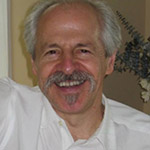
Joe Landis
Joe Landis is former CEO of Indian Creek Foundation and founder and former CEO of Peaceful Living, both Conference-Related Ministries. He is a member of Salford Mennonite (Harleysville, PA).



